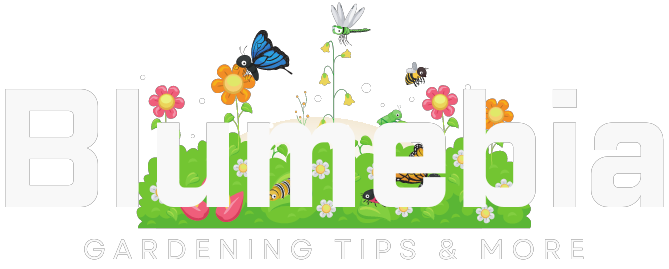Grafting is a powerful horticultural technique used to join parts of two different plants so they grow as one. This method is commonly used to improve plant growth, increase disease resistance, and enhance fruit or flower production. By selecting compatible rootstocks and scions (the part to be grafted), grafting allows gardeners and farmers to combine desirable traits from different plants. This guide will explore various grafting techniques, their benefits, and step-by-step methods for success.
What is Grafting?
Grafting involves joining the tissue of two plants so that they grow together as one plant. The part that provides the root system is called the rootstock, and the part that is grafted onto the rootstock is called the scion. The goal of grafting is to combine the best qualities of both plants, such as disease resistance from the rootstock and improved fruit yield from the scion.
Benefits of Grafting
- Improved Yield: Grafted plants often produce more fruit or flowers than ungrafted ones.
- Disease Resistance: Rootstocks can be selected for their resistance to soil-borne diseases, improving the overall health of the plant.
- Dwarfing Effects: Some rootstocks limit the size of the plant, making it easier to manage and harvest, particularly with fruit trees.
- Faster Maturity: Grafted plants can mature and produce fruit more quickly than those grown from seed.
Types of Grafting Techniques
There are several grafting methods, each suited to different plant types and goals. The most common techniques include cleft grafting, whip and tongue grafting, bud grafting, and side grafting.
1. Cleft Grafting
Cleft grafting is one of the most straightforward and widely used techniques, especially for fruit trees like apples, pears, and stone fruits. It’s commonly used when you want to graft a scion onto a larger rootstock or branch.
Steps for Cleft Grafting:
- Choose the rootstock: Select a healthy rootstock with a branch or trunk about 1-2 inches in diameter.
- Make the cleft: Cut the top of the rootstock straight across, then make a vertical cut down the center of the rootstock about 1-2 inches deep.
- Prepare the scion: Select a scion with 2-3 buds and cut the bottom end into a wedge shape to fit into the cleft.
- Insert the scion: Carefully insert the wedge-shaped scion into the cleft, ensuring that the cambium layers (the green inner layer) of both the scion and rootstock align.
- Seal and secure: Use grafting tape or wax to seal the graft and prevent moisture loss. Wrap the graft tightly to hold it in place.
2. Whip and Tongue Grafting
Whip and tongue grafting is used for plants with similar diameters, typically for younger trees or smaller branches. It provides a strong and secure graft due to the interlocking cuts made in both the scion and rootstock.
Steps for Whip and Tongue Grafting:
- Select the scion and rootstock: Both the scion and rootstock should be of similar size, ideally ¼ to ½ inch in diameter.
- Make the initial cut: On both the scion and rootstock, make a sloping cut about 1-2 inches long. The cuts should match each other in length and angle.
- Create the tongue: About halfway down the sloping cut, make a small vertical cut (the tongue) in both the scion and rootstock. This allows the two parts to interlock.
- Join the scion and rootstock: Fit the two cuts together, aligning the tongues and ensuring the cambium layers match.
- Secure the graft: Wrap the graft with grafting tape to hold the scion in place and protect the wound. Use wax to seal the top of the graft.
3. Bud Grafting
Bud grafting, also known as budding, involves grafting a single bud from the desired plant (scion) onto the rootstock. This method is commonly used for roses, fruit trees, and ornamental plants. It’s a highly efficient method when only a small amount of scion material is available.
Steps for Bud Grafting:
- Select the bud: Choose a healthy bud from the scion, cutting it off with a small portion of the surrounding bark and tissue.
- Make a T-shaped cut: On the rootstock, make a T-shaped cut through the bark. Carefully lift the flaps of the bark to expose the cambium layer.
- Insert the bud: Place the bud inside the T-shaped cut, aligning the cambium layers of the bud with the rootstock.
- Secure the graft: Wrap the area with grafting tape or a rubber band, leaving the bud exposed.
- Monitor growth: After a few weeks, if the bud graft is successful, the rootstock will begin to nourish the bud, leading to new growth.
4. Side Grafting
Side grafting is often used on larger rootstocks or branches, particularly when you want to graft multiple scions onto the same tree. It’s a versatile technique that can be used for ornamental trees, conifers, and fruit trees.
Steps for Side Grafting:
- Prepare the rootstock: Select a branch or trunk of the rootstock and make a shallow, sloping cut on the side, just deep enough to expose the cambium layer.
- Prepare the scion: Cut the bottom of the scion into a wedge shape to match the sloping cut in the rootstock.
- Insert the scion: Insert the wedge-shaped scion into the side cut of the rootstock, ensuring the cambium layers are aligned.
- Secure the graft: Use grafting tape to hold the scion in place, ensuring a snug fit.
- Seal the graft: Apply grafting wax to the graft area to prevent moisture loss and protect against infection.
Tips for Successful Grafting
- Timing is key: Most grafting is done in early spring when plants are beginning their active growth phase. This allows the graft to heal and grow as the plant resumes its development.
- Choose compatible plants: Successful grafts occur when the scion and rootstock are closely related species. For example, apples can be grafted onto other apple rootstocks, but not onto stone fruit trees.
- Use clean, sharp tools: Grafting requires precise cuts. Always use sterilized, sharp grafting knives or pruning shears to avoid damaging the plant tissues and to reduce the risk of infection.
- Maintain good alignment: Ensure the cambium layers of the scion and rootstock align as closely as possible. This is where the exchange of nutrients and water takes place, and proper alignment is essential for graft success.
- Protect the graft: Use grafting tape, rubber bands, or wax to secure and protect the graft. This helps prevent drying out and keeps the graft in place while it heals.
Grafting Aftercare
Once the grafting process is complete, aftercare is crucial to ensure the graft takes and grows successfully.
- Monitor growth: Check the graft site regularly for signs of growth and ensure that the graft remains secure.
- Remove competing growth: Prune any shoots or branches that grow from below the graft site, as these can compete with the grafted scion for nutrients and energy.
- Water and fertilize: Keep the plant well-watered, especially during dry periods. Once the graft begins to grow, you can fertilize the plant to promote healthy development.
Conclusion
Grafting is a powerful tool for improving plant growth, increasing yields, and combining desirable traits from different plants. Whether you’re grafting fruit trees, roses, or ornamental plants, understanding the different grafting techniques can help you achieve a successful outcome. With the right tools, timing, and care, grafting can transform your garden and significantly improve plant performance.
FAQ
What plants can be grafted?
Many fruit trees (such as apples, pears, and citrus), roses, and some ornamental trees can be grafted. The key is to choose compatible rootstocks and scions from closely related species.
When is the best time to graft?
The best time for grafting is typically in early spring when plants are actively growing. This allows the graft to heal and grow along with the plant.
What is the most common grafting technique for fruit trees?
Cleft grafting and whip and tongue grafting are commonly used for fruit trees, as they create strong unions and promote healthy growth.
How long does it take for a graft to heal?
Most grafts begin to heal within a few weeks, but it can take several months for the graft to fully heal and grow as part of the plant.
What is the purpose of grafting wax or tape?
Grafting wax and tape protect the graft site by sealing it from moisture loss and preventing infection. They also hold the scion and rootstock in place while they fuse together.



